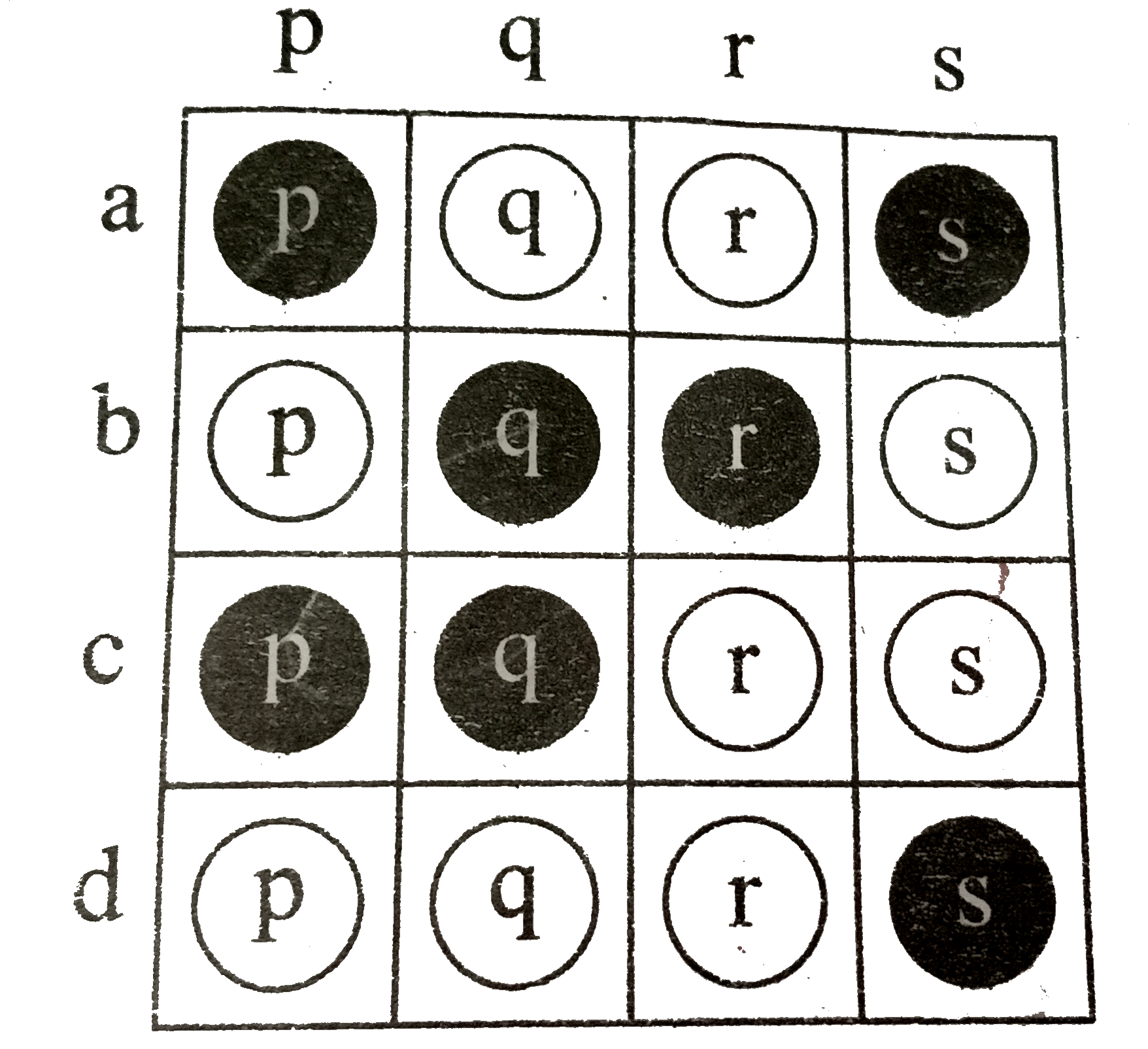Match Column-I with Column-II :
Column-I Column -II
( A) H2(g)+I2(g)→2HI(g) ( p ) Unaffected by inert gas addition
( B ) CaCO3(s)→CaO(s)+CO2(g) ( q) Forward shift by rise in pressure and backward shift by inert gas addition
( C ) N2(g)+3H2(g)→2NH3(g) ( r ) Unaffected by increase in pressure
( D ) PCl5(g)→PCl3(g)+Cl2(g) ( s ) Backward shift by rise in pressure and forward shift by inert gas addition
The correct Answer is:(A→p,r),(B→p,r),(C→q),(D→s)
Topper's Solved these Questions
- ATOMIC STRUCTUREBOOK - FIITJEECHAPTER - ATOMIC STRUCTUREEXERCISE - SINGLE INTEGER TYPE QUESTIONS
8 Videos
- ATOMIC STRUCTUREBOOK - FIITJEECHAPTER - ATOMIC STRUCTUREEXERCISE - ILLUSTRATION 1.
30 Videos
- ATOMIC STRUCTUREBOOK - FIITJEECHAPTER - ATOMIC STRUCTUREEXERCISE - COMPEREHENSION-IV
3 Videos
- ALKYL AND ARYL HALIDESBOOK - FIITJEECHAPTER - ALKYL AND ARYL HALIDESEXERCISE - NUMERICAL BASED QUESTIONS
1 Video
- CARBOHYDRATES, AMINO ACIDS, POLYMERS AND PRACTICAL ORGANIC CHEMISTRYBOOK - FIITJEECHAPTER - CARBOHYDRATES, AMINO ACIDS, POLYMERS AND PRACTICAL ORGANIC CHEMISTRYEXERCISE - EXERCISE
4 Videos
Similar Questions
Lis−IList−II(A)H2(g)+I2(g)⇔2HI(g)(P)Unaffected by inert gas addition (B)CaCO3(s)⇔CaO(s)+CO2(g)(Q) Forward shift by rise in pressure and backward shift by inert gas addition at constant pressure (C)N2(g)+3H2+(g)⇔2NH3(g)(R) Unaffected by increase in pressure(D)PCl3(g)⇔PCl3(g)+Cl2(g)(S)ackward shift by rise in pressure and forward shift by inert gas addition at constant pressure
View Solution
Q. Match the column-I with Column-II
 .
.
View Solution
Knowledge Check
Match the following :
List-I List-II
(P) N2(g)+3H2(g)→2NH3(g) (1) Increase in volume favours forward reaction
( Q ) 2NO(g)→N2(g)+O2(g) ( 2) Increase in pressure accelerate the forward reaction
( R ) CaCO3(s)→CaO(s)+CO2(g) (3) Kp=Ptotal
( S) PCl5(g)→PCl3_(g)+Cl2(g) (4) At constant volume introduction of inert gas, has no effect.
Codes :APQRS2431BPQRS2314CPQRS3142DPQRS4312The equilibrium constant for the given reaction,
CaCO3(g)→CaOs+CO2(g) is given by :AKc=[CaO]⋅[CO2][CaCo3]BKc=[CaO][CaCO3]CKc=[CO2]DKc=[CaO][CO2]For the reaction H2(g)+I2(g)⇔2HI(g), the equilibrium can be shifted in favour of product by
AIncreasing the [H2]BIncreasing the pressureCIncreasing the [I2]DBy using the catalyst
For CaCO3(S)⇔CaO(s)+CO2(g),ΔH = + Q at equilibrium. The addition of more CaCO3(s) causes?
View SolutionMatch the pollution(s) in column I with the effect(s) in column II.

View SolutionMatch the pollution(s) in column I with the effect(s) in column II.

View SolutionFor the reaction H2(g)+I2(g)⇔2HI(g), the equilibrium can be shifted in favour of product by
View SolutionMatch the ions of Column-I with the properties of Column-II
Column-I Column-II
(A) Mn2+ (p) Diamagnetic
( B) V3+ ( q ) Paramagnetic
( C ) Zn2+ ( r ) Coloured compounds
( D ) Ti4+ ( s ) Magnetic moment = 2.82 BM
View Solution
